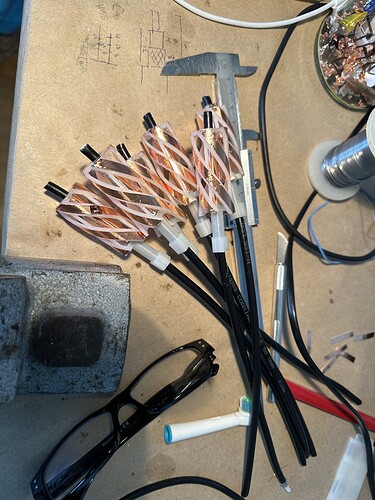Looking to detect Inmarsat transmissions (1575.42 MHz). Has anyone had any experience with this?
Just to detect, or are you wanting to perform some DOA analysis on them?
The initial priority is to detect, but ideally DOA. Thanks
Just like any RTL-SDR you could use an LNA + patch antenna. For DOA the spacing requirements might be too small for a typical patch sizing, so you’d need to design and build your own patch array.
Thanks Carl - appreciate the advice
Just a thinking, isnt that FQ GPS? Inmarsat uplink frequency band is 1626.5 - 1660.5 MHz and the downlink frequency band is 1525.0 - 1559.0 MHz. At least at that time i was working for PTS (Sweden,FCC) maybe changed?
yes - its those frequencies
Hi,
I am playing with L-band and kraken. To use the original SW and put antennas in circle the patches overlap each others, it happened for me. Depends on substrate you are using, mine had Er=1.5. It is also difficult to make patches with decent circular polarisation.
So I am now 3D printing 5 x QFA perfectly circular antennas that I can easily organise in different array configurations.
Below is for circle I built this weekend :
For satellite you cannot predict one polarisation and use vertical polarisation , so best to use circular. I am aiming to track NOAA RHCP L-band satellites.
If anyone is interested I can share files for printing and building.
But be warned it is still untested - I would appreciate some fellow designers in this project. Before testing I need to fine tune each antenna so they get similar characteristics.
Are you measuring the length of each cable with a VNA?
Yes, each antenna is characterised with nanoVNA, including cable. Cables are of exactly same length, it is possible to fine adjust in antenna end, even though everything have same dimensions small variations in build needs to be compensated.
QFA antenna is narrow band and needs to be individually fine tuned.
I am modifying this antenna for L-band 70cm QFA

